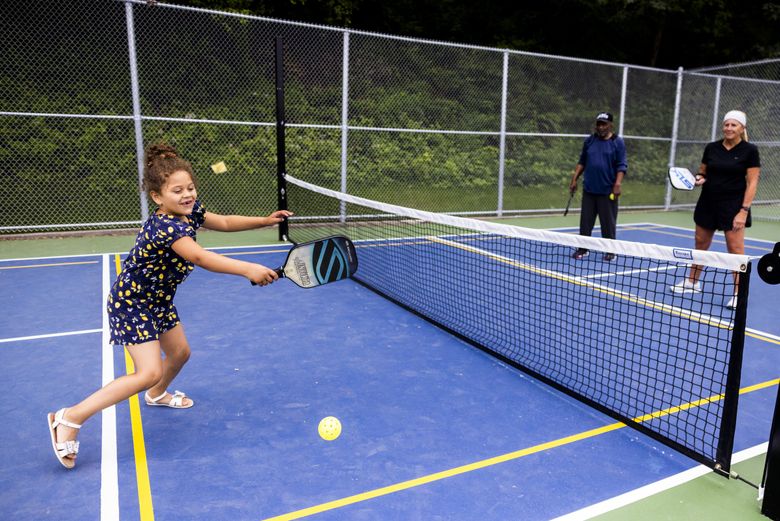
When it comes to pickleball, the court’s dimensions play a crucial role in gameplay and overall enjoyment. Whether planning to build a court in your backyard, community center, or sports complex, choosing the right dimensions is essential for creating a safe and enjoyable playing environment. When seeking expert guidance, their knowledge and expertise enable them to determine the optimal court size based on available space and intended use.
Experts consider local regulations, player preferences, and site limitations to design a pickleball court that maximizes functionality and enjoyment. By consulting PICKLETILE, you can trust that the court size will be tailored to meet your needs and ensure an exceptional pickleball experience for all players.
Continue reading to understand the factors to consider when determining your space’s ideal pickleball court dimensions. Let’s explore how to design a pickleball court that meets official standards and enhances your playing experience from court size to net height.
- Standard Court Size:
- According to official pickleball regulations, a standard court measures 20 feet wide and 44 feet long for doubles play, with additional space for sidelines and baselines. However, if space is limited, a smaller court size of 34 feet long can be used for singles play.
- Net Height:
- The net height at the center of the court should be 36 inches for pickleball, slightly lower than the net used in tennis. This height allows for fair gameplay and ensures players can easily clear the net during serves and volleys.
- Surface Material:
- The right surface material is crucial for maintaining traction, durability, and player safety on the pickleball court. Common surface options include asphalt, concrete, acrylic, and cushioning materials, each offering different bounce, speed, and comfort characteristics.
- Court Markings:
- Proper court markings are essential for defining boundaries, service areas, and non-volley zones (commonly known as the kitchen). Clear and accurate markings help players stay within the game’s rules and facilitate smooth gameplay without confusion or disputes.
- Space Considerations:
- When designing a pickleball court, consider factors such as surrounding obstacles, drainage, and spectator seating to optimize the playing environment. Allow adequate space around the court to prevent interference from walls, fences, or other structures.
- Accessibility and Safety:
- Ensure that the pickleball court is accessible to players of all ages and abilities by incorporating ADA-compliant pathways, seating areas, and signage. Additionally, prioritize safety by installing proper lighting, fencing, and padding to prevent accidents and injuries during gameplay.
Determining the right pickleball court dimensions for your space is essential for creating a welcoming and functional playing environment. By adhering to official regulations regarding court size, net height, surface materials, and markings, you can ensure fair gameplay and an enjoyable experience for players of all skill levels. Whether building a court for recreational use in your backyard or for competitive play in a community setting, thoughtful planning and attention to detail are key to designing a pickleball court that meets the highest quality, safety, and performance standards. So, take the time to consider your space, consult with experts if needed, and create a pickleball court that will be enjoyed for years to come.


